

Across Networks, Across Disciplines
Editor: Jennifer Donovan
Design & Illustration: Michael Lewy
Writers: Jack Curtis
Katie DePasquale
Jenna Fisher
Rachel VanCott
Photography credits:
LIDS Student Conference photos taken by Matt Johnston and Swati Gupta. Commencement Reception photos and portraits of Eytan Modiano, James Saunderson, and Petra Aliberti taken by Jennifer Donovan.
Massachusetts Institute of Technology
Laboratory for Information and Decision Systems
77 Massachusetts Avenue, Room 32-D608
Cambridge, Massachusetts 02139
http://lids.mit.edu/ send questions or comments to lidsmag@mit.edu
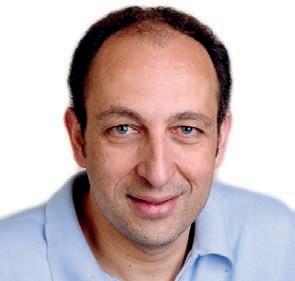
A Message from the Interim Director
I want to start my forward by expressing my deep thanks and appreciation to Alan Willsky, who has has retired, stepping down as LIDS director effective July 1, 2014. In the past 7 years, Alan has, with great energy and dedication, advanced LIDS to where it is today: a leading organization and vibrant focal point in the areas of information and decision sciences, both within and outside of MIT. But more importantly, Alan made LIDS a great home for faculty, students, post docs, principal scientists, and staff as he created an inclusive and supportive environment that fostered academic and social interactions based on mutual respect. Having served as an Associate Director of LIDS under Alan’s leadership (together with John Tsitsiklis and later replaced by Pablo Parrilo), I directly benefited from Alan’s mentoring and guidance in my own career at MIT. We are indeed indebted to Alan for all the great work and wonderful service he has provided to LIDS. We are completing another exciting year at LIDS. This was particularly an important year for the Laboratory as most of our faculty, in addition to other faculty from MIT, participated in the proposal for the creation of a new Entity at MIT that focuses on solving complex societal problems. As envisioned, the new Entity would become the center of gravity in both education and research as
ABOUT LIDS
The Laboratory for Information and Decision Systems (LIDS) at MIT, established in 1940 as the Servomechanisms Laboratory, currently focuses on four main research areas: communication and networks, control and system theory, optimization, and statistical signal processing. These areas range from basic theoretical studies to a wide array of applications in the communication, computer, control, electronics, and aerospace industries.
Sincerely,

Munther Dahleh
William A. Coolidge Professor they pertain to these complex problems by unifying the foundations in Statistics, Information and Decision Sciences, and Human and Institution Behavior. If this proposal is approved by the MIT Administration, LIDS will not only continue as the vibrant organization it is now but would also play a major leadership role in launching this new and exciting Entity, which represents a tremendous opportunity for growth for the Lab. In the meantime, I have accepted the role of interim director of LIDS until the new structure is realized. This issue of LIDS-ALL promises a great selection of profiles of LIDS students, faculty, alumni, administrators, and friends. Their stories bring out not only the wonderful experiences that they had being members of the LIDS community but also their great contributions to the Laboratory over the past many years. I sincerely hope you enjoy reading our magazine and, as always, we greatly appreciate all of the support that you have provided to LIDS. You can expect to hear more great things about LIDS and its people in the future, and we look forward to hearing from you as well.
LIDS is truly an interdisciplinary lab, home to about 100 graduate students and post-doctoral associates from EECS, Aero-Astro, and the School of Management. The intellectual culture at LIDS encourages students, postdocs, and faculty to both develop the conceptual structures of the above system areas and apply these structures to important engineering problems.
THE NATURE OF ENGINEERING
By Katie DePasquale


Imagine being able to take a bacterium, like E. coli, and direct it to a specific spot in the body for targeted medical treatments. Imagine being able to design inexpensive robots that can randomly distribute themselves throughout the ocean without using GPS or any type of communication. Imagine, in essence, learning how to create a robotic system as elegant and productive as one created by nature itself, and this describes the work of Noele Norris.
A third-year graduate student at LIDS, Noele is studying bacteria, and how they swim, in a quest to understand how their habits can be applied to robots. With a background in robotics, she came to LIDS planning to continue her work through a study of transportation networks with her advisor, Professor Emilio Frazzoli. Instead, to her own surprise, she has ended up focusing on systems biology, which takes an interdisciplinary approach to examining the intricate interactions of biological systems like the enzymes and metabolites in a metabolic pathway. “Emilio gave me the opportunity to explore… and he talked to a colleague about his research studying how bacteria swim,” Noele says, “and Emilio saw some similarities. What can we do if we think of bacteria as robots? Can we gain a better understanding of what bacteria are doing, and can we also gain insights from bacteria about how we can better engineer robots to be as efficient as bacteria? And now, I’ve been doing that for the last three years.”
Noele’s path to her current research has been circuitous. It has led her from her hometown of Miami, Florida, to Caltech in Pasadena, and then to London for a Master’s in English Literature. She began her studies at MIT and LIDS after returning to the United States, but never expected she would end up immersing herself in biology. “For so many years, I’ve been learning about these abstract engineering systems, how humans engineer various systems, and in particular robots,” says Noele. “And then suddenly, I [saw] that this is how nature does it…. I think I’d always been very scared of biology’s complexity—all of its terminology—but then suddenly seeing it as an engineered system, it all made sense to me and was incredibly exciting.” Her background in math and engineering has proven to be the strong foundation she needed to dive into her current research project, which focuses on using microfluidics to study the movements of bacteria.
Because bacteria are mere microns in size (for the sake of comparison, a human hair averages 150-200 microns thick), they can be tricky to examine. This means that when looking at their motility, it is most informative to have a situation in which you have complete control over their environment. Professor Roman Stocker’s lab with the Civil and Environmental Engineering Department at MIT does just that. They structure their experiments to set up and then alter the composition of the fluids surrounding the bacteria with precision; and No -
ele has been gathering and analyzing the data from those experiments with a focus on how the bacteria respond to the distribution of nutrients in a particular environment. She explains, “It turns out that what bacteria do is accumulate in environments that are very rich in nutrients. And how do they do this? They swim in random directions for random amount of times. But they swim longer in a direction when they measure that the environment is improving. In other words, when they measure that the nutrients are greater in their current location than in their previous location, they are more likely to continue to swim in the same direction.”
It may not seem immediately obvious how the random movements of a microorganism can be applicable to robots. As Noele says, it would seem like robots would have to communicate with each other to achieve the type of successful distribution that bacteria randomly have. But that is exactly where the value lies. “[Bacteria] obviously don’t have GPS. They don’t know where they’re located in their environment,” says Noele. “They do not communicate with each other when they’re looking for nutrients. It’s just that they’re able to distribute themselves nicely because they’re swimming randomly…. They’re continuously swimming all over the environment, and they’re just spending more time in areas where there are more nutrients. For me, that’s really interesting because these are the sorts of things that we would
want robots to be able to do, for various environmental monitoring or surveillance tasks.” Therein lies one of the key questions of her research: “Can we make really cheap, really stupid robots that can achieve [these] tasks?”
The benefits of a successful application of minimalistic robotics could be enormous, from monitoring ocean environments for contaminants to searching for evidence of climate change. There is also value in examining the question from the other angle, which is how to use bacteria themselves as robots, prodding them to swim to a particular location. For example, what if, instead of E. coli sitting in a container producing proteins for medical treatments, it was sent to the intestine to target the medicine precisely where it is needed? Learning how to use bacteria as robots could have farreaching effects, both for purposes of bioremediation and for the potential impact on medicine.
Looking for new insights in unexpected places is not unusual for Noele. It is exactly what she did when getting her Master’s in English Literature: she went to London planning to study modern literature and the works of Virginia Woolf and ended up writing a thesis about the female voice in the early English novel, focusing on the writers Daniel Defoe and Samuel Richardson. “I really surprised myself. I’m continually surprising myself by reading more of these strange books,” Noele laughs. “What
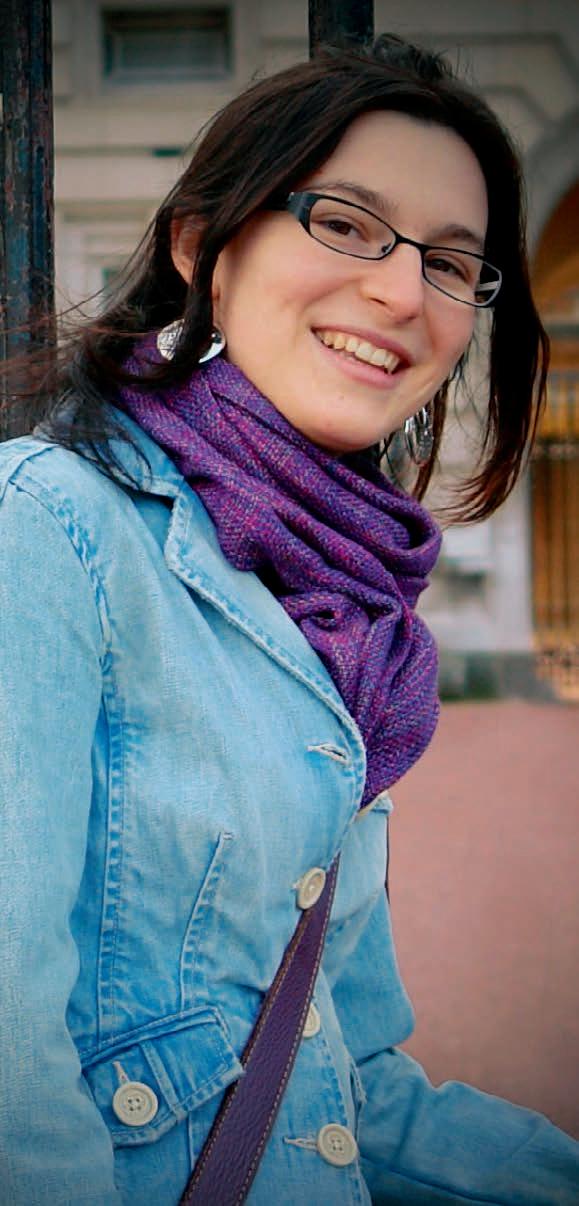
really excites me about literature and why I enjoy studying it and reading it is that I put myself in completely new experiences, and I get a sort of insight into what it was like to be living in 18th century London.” This open approach to learning has led her in new directions at LIDS, too, and continues to push her to explore and investigate the world in different ways. For now, however, she’s very happy with her current research path and with her colleagues at LIDS. “I think that the best thing about LIDS,” she says, “is that I’m continually interacting with people who are challenging me, giving me ideas, and who are doing incredible things themselves.”

ASKING THE RIGHT QUESTIONS
By Rachel VanCott
One day, a visiting researcher came to present his work to Professor Eytan Modiano’s group. He started by outlining the assumptions he made when creating his mathematical model, and he never got further than that. The students in Eytan’s group started questioning the researcher’s modeling assumptions, trying to understand the way the problem was framed. What started as a full presentation morphed into an in-depth discussion of just those first few slides. Frustrating as it might sound, what the students were doing—questioning what they didn’t understand and fully investigating the assumptions involved—illustrated one of the values Eytan is proud to see in his students. He remembers a conversation he had with one of his graduate students shortly after that presen-
own research, ready to direct their own lines of inquiry. They are colleagues, ready to take their place in a growing field of research.
The Internet, as we know it, is only about twenty years old. But in those decades, it has changed the way we work and the way we live our lives. Eytan’s field is communications and network research. He and his students design the architecture for data communication, be it via wireless, satellite, or optical networks. His work involves refining and reimagining the technology behind the communication networks that run our world, by combining techniques from disciplines like graph theory, optimization, and queuing theory. Consider, for example, wireless networks. We use wireless networks
One of the great things about being a professor, according to Eytan, is watching how students evolve and grow as they pass through his lab.
tation. What the student said stuck with him.
“One thing about this research group is that we spend most of our time modeling the problem and making sure we ask the right question before we answer it,’” Eytan recalls the student saying, “I was very flattered to hear that. That’s exactly what I like to see as a value in my students.” One of the great things about being a professor, according to Eytan, is watching how students evolve and grow as they pass through his lab. At the start, some are unsure and immature. But by the time they graduate, they are confident and capable of conducting their
to connect electronic devices for personal communications, sensing, command and control of systems, and even coordinating fleets of autonomous vehicles. To design an efficient ad hoc network—a specific type of decentralized wireless network in which each node forwards data for other nodes and the topology of the network changes dynamically—you need to use multiple techniques. You need graph theory to design routing algorithms that determine the path a message takes as it flows from source to destination. You need optimization to design the scheduling algorithms that dictate which
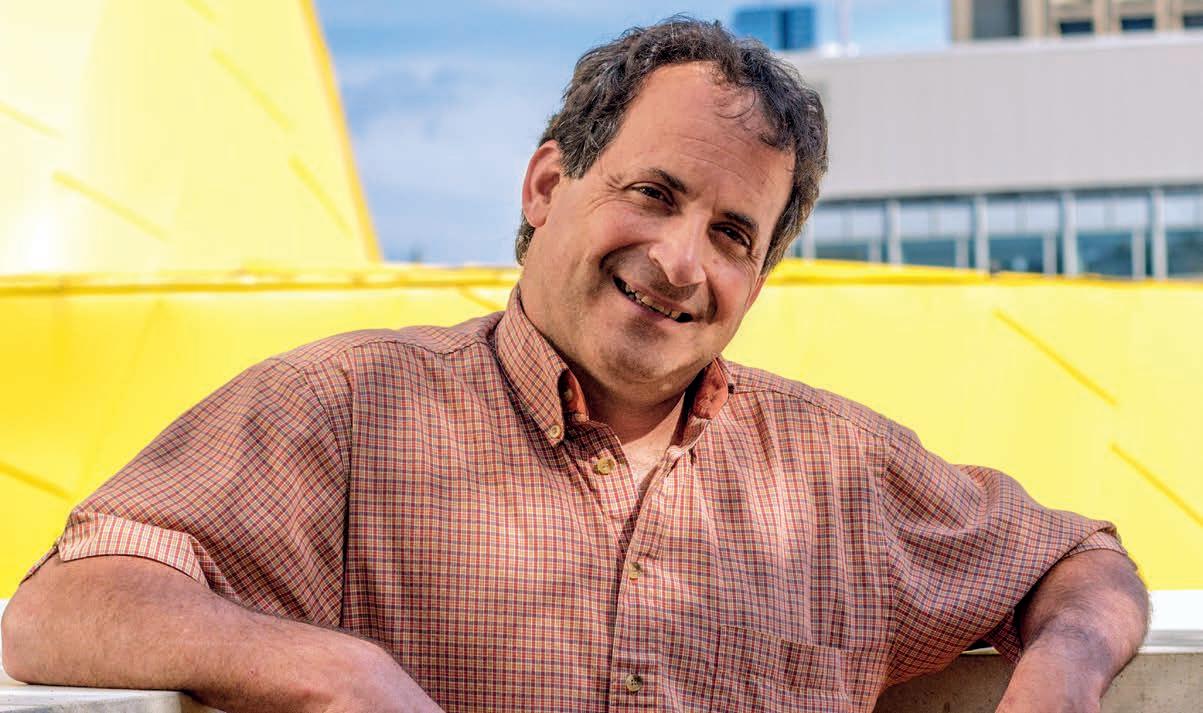
nodes transmit information on specific frequencies at specific times. You need queuing theory to analyze the network’s performance in terms of throughput and delay.
Out of necessity, Eytan has relatively deep knowledge of several techniques. That’s the only way he’s able to do this kind of theoretical, broad research. But he didn’t always have such fundamental research work in his sights. Before coming to LIDS, Eytan worked at MIT’s Lincoln Laboratory. “When I was at Lincoln
Lab, I read the papers of academic researchers and tried to learn from those papers and apply the techniques to the systems that we were developing at the lab,” said Eytan, “But what I really wanted was to be one of those people writing the fundamental research papers.” So he joined LIDS. At that time, some fifteen years ago, there weren’t many MIT researchers working in the area of communication networks. But most were working at LIDS, and LIDS had a history of pioneering contributions in this area. Over the years, as Eytan has seen the lab grow,
he’s learned a lot about how to juggle the two primary demands of an academic environment: research and teaching. “[For research,] I need to think years ahead, about the important problems coming five or ten years down the line, and go and get funding for them,” said Eytan, “For teaching, I need to think about what I have to do at 11 AM.” Teaching can be difficult to do, but it’s easy to prioritize. Right on schedule, every week, the lecture hall is filled with students, waiting for you. Comparatively, getting funding for and conducting research is more like a low hum in the background, rarely urgent but always important. The trick, as with so many things in life, is setting priorities. “It’s not merely about hard work,” said Eytan, “I’m associate department head in Aero-Astro at MIT, and there are a lot of responsibilities... all very important things. They’re always urgent and they always need you. But if I were to do that I would not get any research done. I would not be able to support my students. I make a point that this is critical and I block out time for research that’s not interruptible.” By all indications, his system of setting priorities works. In the last decade and a half, Eytan has risen through the ranks from assistant to full professor at MIT, served as associate editor for a number of peer-reviewed journals, been on the planning committee for conferences, and become an Institute of Electrical and Electronics Engineers (IEEE) fellow and an associate fellow of American Institute of Aeronautics and Astronautics (AIAA).
One of the up-and-coming important problems that Eytan is looking at is network resilience. He plans to study how networks react to natural disaster, attack, or catastrophic failures. “Today’s world is increasingly controlled by computers and depends on communications and the Internet,” said Eytan, “I’m looking at the possible vulnerabilities that might arise from that.”
When he isn’t working, Eytan travels with his wife and two children. He likes to go off the beaten path, exploring places like Central America, Southeast Asia, and Africa. “I like to travel to places that have a lot of nature and wildlife,” said Eytan, “If you’re in Africa on a safari, you’re not going to have an easy time thinking about graph theory. ...I think that the biggest challenge of being a professor at MIT is being able to separate, and get your work out of your mind.” Cooking is another activity that Eytan truly enjoys. It is a creative outlet that allows him to clear his mind from work. He specializes in Mediterranean and Middle Eastern Cuisine, replicating many of his mother’s traditional recipes. He prepares all of the family meals, and enjoys hosting friends and family for dinners. As much as he travels, and values spending time with his family, Eytan seems satisfied with the place his work has in his life. He enjoys the process of mentoring students and knowing that he’s doing meaningful, fundamental research.
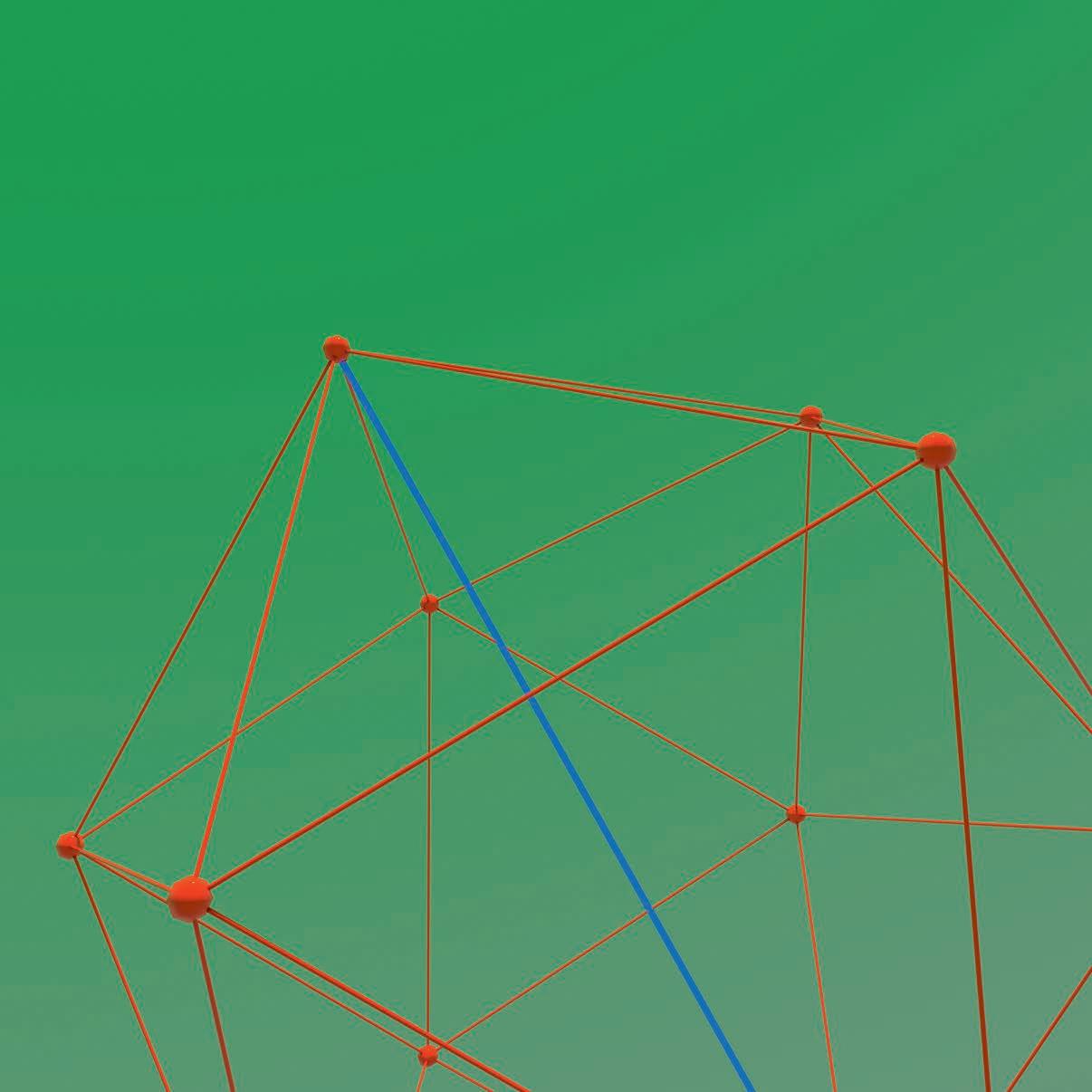
Across Networks, Across Disciplines
By Jack Curtis
When he surveys his academic, research, and teaching experience, Vince Poor, Dean of the School of Engineering and Applied Science at Princeton University, is quick to say he has been in the right place, at the right time, with the right skills. He considers himself fortunate— which he expresses with a measure of amazement and appreciation. Along the way, he has had inspiring mentors, helpful colleagues, and innovative students, and has been positioned to make significant contributions to the field of cellular communications from its onset.
As a child of the space age, a time when people who liked and excelled in mathematics were captivated by engineering, Vince saw his path early, and as an undergraduate at Auburn University, he was lucky to have a professor of electromagnetics, Edward Graf, who had the unique habit of employing undergraduates to work alongside graduate students in his lab. This experience introduced Vince to the world of scientific research. It also helped him to realize he liked the academic setting. “I admired my professors,” says Vince. “To me, it looked like they had great jobs, that working with students was satisfying work, and that doing research was intellectually stimulating. I felt it was the thing for me.”
When applying for graduate school in engineering, though, he pressed his luck. “I applied to only one school—the wonderful engineering school at Princeton—and I was accepted. I
knew about Professor John Thomas’s work in statistical communication theory and I wanted to go only to Princeton [to work with him].”
Thomas was an inspiring mentor, who, Vince says, had “a very good knack” for working with his students and encouraging them to be creative; a foundation for which Vince is grateful and an influence that can be seen throughout his career.
Coincident with the start of Vince’s career was the emergence of cellular communications technology. Sensing an opportunity, he quickly saw that fundamental communications methodologies could be useful in solving problems that arose in this burgeoning field. With amazing speed, the technology became both more sophisticated and widespread. The attendant challenges kept coming, and keep coming today.
“I have a core methodology in mind, and I tend to move into new areas when I sense how I could profitably apply that methodology to new issues,” Vince says. “Cellular communications, one of the most important technologies of our time, and its dramatic changes, have spanned my entire career. And fortunately it’s still going strong.”
A defining feature of Vince’s career has also been his recognition of technology in its larger, social context. “Technology doesn’t exist in a vacuum; it’s part of society,” says Vince. “The
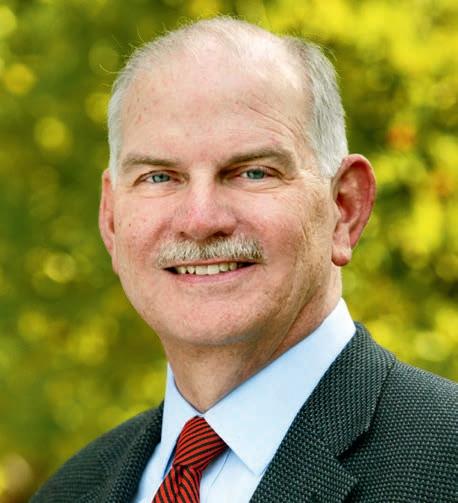
most important issues we currently face—energy, healthcare, security, water—are technological in nature. Social, economic, and political issues are critical topics for people in the engineering field. Giving engineering students a wide-ranging perspective makes them more innovative and better able to collaborate with others from diverse disciplines and to assume leadership roles within complex organizations.”
Vince began his career at the University of Illinois at Urbana-Champaign and joined Princeton in 1990. In 2000, witnessing the dramatic expansion of cellular communications, Vince created and taught an undergraduate course, “The Wireless Revolution: Telecommunications in the 21st Century,” which explored wireless technology in a societal context. It quickly caught on, especially with liberal arts
students. The course, which has responded to ever-advancing cellular technology and its everbroadening impact, remains a very popular course at Princeton.
That course exemplifies one of the engineering school’s core strengths, the ability to bridge engineering, humanities, and the natural sciences. To enhance this ability, the school established the Keller Center for Innovation in Engineering Education in 2005, with Vince as its founding director. Fostering academic and experiential learning opportunities that span engineering and other fields, the center seeks to instill a broader understanding of the global, economic, environmental, and cultural forces that shape and are shaped by technology. Vince was named the Dean of the School of Engineering and Applied Science in 2006. Throughout his tenure, he has concentrated on further solidifying the school’s multidisciplinary ethos. “With breadth of learning being a basic element of the school’s culture, students are naturally inclined to study and work across the disciplines,” says Vince.
Vince has conducted landmark research in the fields of statistical signal processing, information theory, and stochastic analysis, and their applications in wireless communications and related fields. For example, by analyzing relay and interference channels, he has addressed the basic limits of cooperative communications and spectrum sharing. He has also explored
the physics of the radio channel and its ability to provide security in data transmission and developed methods to enhance this capability.
His key current interests in social networks involve using models and analytical techniques to better understand social phenomena that have arisen in experimental studies of social networks as well as co-developing an online content trading system, dubbed “Sharing Mart” that is used locally at Princeton. He and his colleagues are using it to investigate user behavior in various sharing and content trading scenarios. Vince is also researching how advanced methods drawn from wireless networks can make the smart grid, the emerging technology for improving the distribution and consumption of electric power and integrating renewable energy sources, more efficient, resilient, and secure.
Highly regarded as a scholar and teacher, Vince is a fellow of the IEEE and past president of its Information Theory Society. He is also a past editor in chief of the IEEE journal, Transactions on Information Theory. He is a member of both the National Academy of Engineering and the National Academy of Sciences, and he was recently elected a foreign member of the Royal Society of London. This coming fall, Finland’s Aalto University will confer his fourth honorary degree. In 2013, he added to his substantial list of publications, Principles of Cognitive Radio, coauthored with Ezio Biglieri,
et al. It is the first book to address the core physical and networking principles of the emerging technology of cognitive radio, which has the potential to mitigate the problem of increasing radio spectrum scarcity through dynamic spectrum allocation.
Vince’s career and achievements link him to LIDS, where he has served on its advisory committee since 2009. LIDS professor Dimitri Bertsekas was a colleague in the electrical engineering department at Illinois. One of his former students, Yury Polyanskiy, is the newest LIDS faculty member. “LIDS is a storied place,” he says, “and has had a tremendous impact on my field. The advisory committee has enabled me to keep up with research at LIDS and get to know the faculty and students, while also learning about other committee members’ institutions.”
Throughout his career, Vince also has had the right attitudes, which took root not through good fortune, but through good practice. He looks to his students and fellow academicians for new and bold ideas. “I consistently learn a great deal from my colleagues, students, and post-docs. They help move my work forward. Plus other perspectives from various disciplines and settings also advance the process. Research, and learning from its findings, are collective endeavors.
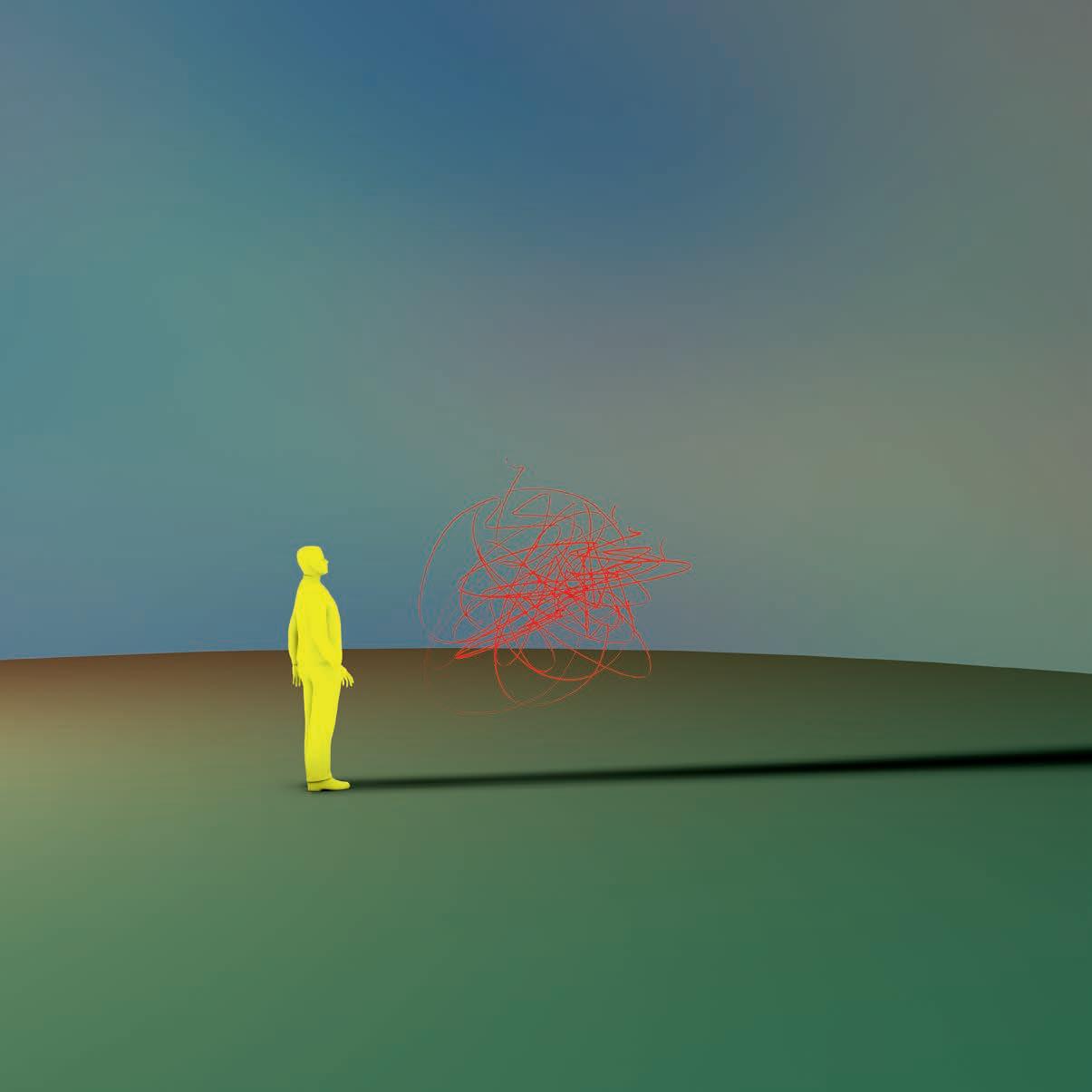
Reformulating the Problem
By Rachel VanCott
Internet access is scarce in the remote villages of Namibia. There was certainly no chance of getting online, where James Saunderson was staying as a volunteer teacher, in that sparsely populated country in Southern Africa. If he wanted to check on the status of his graduate school application, he had no choice but to hitchhike over a hundred miles to the closest town. One weekend, an acceptance letter from MIT was waiting for him in his inbox.
James came to Namibia by way of his interest in teaching and a quirk of the academic calendar. After graduating with bachelor’s degrees in mathematics and electrical engineering from the University of M elbourne, in Australia, he considered getting his PhD in the US. But if he did that, he’d be left with some time on his hands. The Australian school year ends in December and students in the US don’t even start sharpening their pencils until the following September.
He decided to spend the time volunteer teaching, at the high school level, to see how it suited him. As an undergraduate, he was a TA for multiple courses and he found a real satisfaction in teaching. He discovered that he loved hunting for the core of an idea. He liked grappling with the challenge of communicating concepts and seeing the payoff that came when a student really, truly, understood a concept.
interesting problem in some ways,” said James, “I like thinking about how to really explain things to people.” So James volunteered with WorldTeach, a non-governmental organization that sends volunteer teachers to work and live in developing countries. The WorldTeach program placed James at the Divindu school, where he taught mathematics and physical science.
When he found out he was accepted to MIT, James was excited, but he couldn’t just take off and travel over seven thousand miles to meet with potential advisors on campus. So he kept making weekend pilgrimages, gathering information about labs, drafting emails during the week and sending them from the nearby town.
A few weeks later, he heard from LIDS Director Alan Willsky and LIDS Associate Director Pablo Parillo, offering him a research assistantship. He said yes, without hesitation. “I’d never met them,” James said, “I knew some things about what they did, but not a lot. What I wrote on my application was what I thought. They knew my background [from my application] and they wouldn’t sign me up if they didn’t think it would be a good fit for everyone involved.”
“I find teaching to be a very difficult and very
“It seems to me that professors take a lot of leaps of faith in hiring grad students,” James said, “They get used to taking that leap of faith. I suppose I also took a leap of faith, but I didn’t think of it that way, I just said ‘Yes.’” Though he’d planned to stay a full year in Namibia,
James was able to hand off the program to a new semester-long volunteer and start MIT in the fall. So far, it’s been a great match.
“I’ve been lucky enough to be able to work on problems that I’ve liked.” said James, “Problems that have an intrinsic beauty, that I think have a simple answer, if only we could think about them clearly, in the right way. I get sucked into them, and can beat my head against them for a long time, and somehow it’s still fun.”
The problems that James has been beating his head against most recently, as part of his work at LIDS, share some qualities with the challenge he felt when he first started teaching. But where teaching involves rephrasing and explaining concepts so that they’re easier for students to understand, his work at LIDS involves reformulating optimization problems so that they’re easier for a computer to “understand” and solve.
An optimization problem is just what you’d expect it to be, based on the name. An optimization problem involves looking for the best solution, out of all the feasible solutions. You might want to design a fuel-efficient airplane, reduce waste in a manufacturing process, or make good estimates of the orientation of a satellite as it tumbles in orbit. To start, you need reformulate the problem—describe the problem’s constraints and goals mathematically as something to be solved through computation. Sometimes, there’s an obvious way to express the
problem. But the first formulation a researcher sees isn’t necessarily the best. The obvious choice might be unnecessarily complex, or described in a way that makes it difficult to formulate for and resolve via a computer program.
Researchers look, instead, for computationally “good” descriptions. Unfortunately, there’s no simple system that can be used to generate a good description for a real-world problem. But similar problems can often be classified according to their properties. Once you classify a problem, you can try to solve it using methods that worked on other problems in the same family.
Part of James’s work involves identifying problems that fall into a family that can be described and solved efficiently using the techniques from a subfield of optimization known as semidefinite programming. “I find it very satisfying when our new understanding of an optimization problem leads to computational methods that people didn’t have access to before,” said James.
But his ambition is to do more than just discover new examples to add to the list. He’s interested in finding some way to understand why certain problems can be described in certain ways, and why other problems can’t, in hope of seeing the bigger picture.
“I’m much more motivated by understanding what is going on than any particular application,” said James, “When the story is very
complicated, as it is now, it’s hard to see how to solve the next problem, or even recognize when the problem can’t be solved using the method at hand.”
James sees echoes of his motivation, the desire to both solve a specific problem and, at the same time, lay the groundwork for understanding the general problem, in the work of other researchers and groups at LIDS. “I think a lot of work in LIDS over the years has been about taking the problems people really want to solve, then making the simplest version that preserves essence of the original. Really understanding these simplified problems can give all sorts of insight into the messy, full problem,” said James “It’s an interesting space. I don’t know if it exists in many places.”
James is now in the fifth year of his PhD studies and nearing the end of his time as s student at LIDS. But if all goes according to his current plan, this is just the first part of his career in academia, where there’s always room to grow, teach, and learn.
“I’d like to learn the knack of explaining the things that I like to think about better,” said James. “Why I care about them. Why I think they’re interesting and why other people should care about them.... My work is pretty central to my life at the moment, I have to say. But that’s mostly because I enjoy it a lot.”
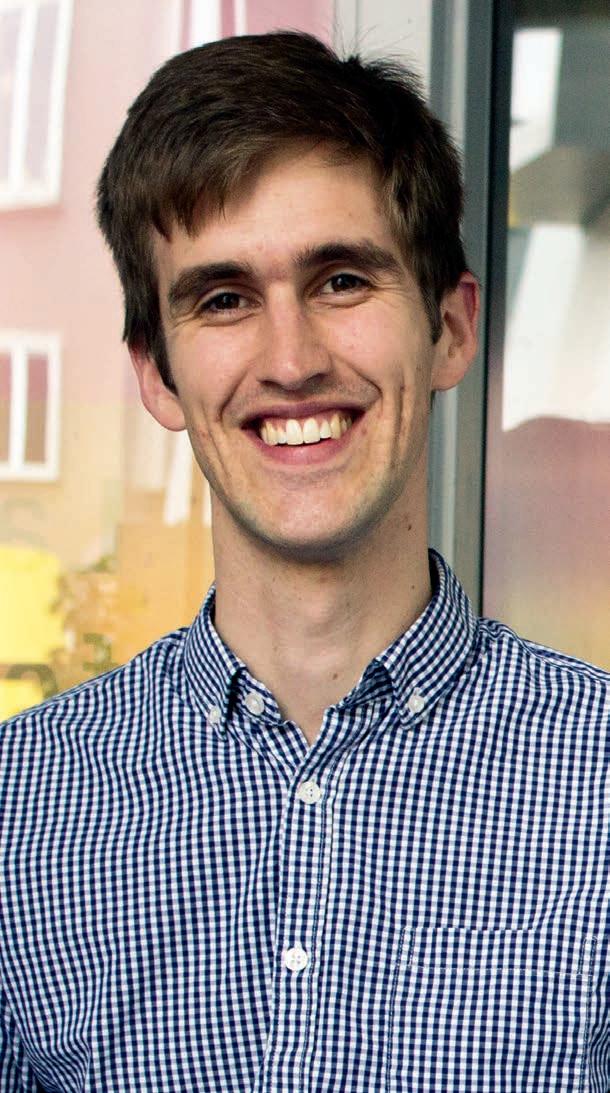

By Jenna Fisher
Jeff Shamma fondly remembers his first major academic Eureka moment. He was in grad school at LIDS—he pushed his chair back and started pacing back and forth around his Tang Hall apartment. When he presented his findings to his adviser, LIDS Professor Michael Athans, he was almost breathless with excitement. His adviser heard him out, let him feel the excitement, and then said: “Oh so you derived a better bound? What else have you done?” And Jeff thought, “Wow. I guess this is going to be a lot harder than I thought.”
But he got a taste of what it felt like to crack a case. And more than two decades later the New York City born father of four still lives for it.
Jeff has been based at Georgia Tech for the past seven years where he’s working on crosspollinating his background work in Control Systems with Game Theory for multi-agent systems. He juggles several projects in addition to his teaching and service activities. His projects highlight his journey from both feet planted firmly in the engineering world to his rather unexpected migration into the social world. Still, most of his projects have a multi-agent theme- whether that’s many controlled devices interacting, or a hybrid of machine and humans interacting, or humans interacting with humans.
To get a sense of his current focus, think about unmanned vehicles, as in mobile sensors or search and rescue robots. The current model is that there are one or several pilots for
one vehicle. Shamma is working on finding a way to reverse that so there’s one pilot—or one operator—for multiple vehicles. He likens it to a coach and their team of players. If a coach had to be moving the players on the team individually, it would take several coaches to get anything done. But if the coach could issue some high level commands from the sideline, the players can then try to execute them in concert, and the team needs only one coach for all the players on the field.
While in many ways more efficient, the challenge of the one coach-many players model is that there can be miscues and miscommunication. Not everyone has all of the information, and toplevel communication is limited—a coach can’t yell out everything that he’s seeing in the field from his larger perspective. The brilliant thing is that plays get executed anyway, largely as the coach instructs, and the game moves forward.
There are many systems that function in this coach-team fashion. So, Jeff reasoned, why couldn’t it work that way in even more systems—for instance, a manufacturing or an engineering situation? This line of inquiry led Jeff to Game Theory—a pursuit that changed his research direction completely.
A major component of Game Theory is incentivization. The assumption is that humans interact, play, or execute tasks both with their own motives or desired outcomes in mind, as
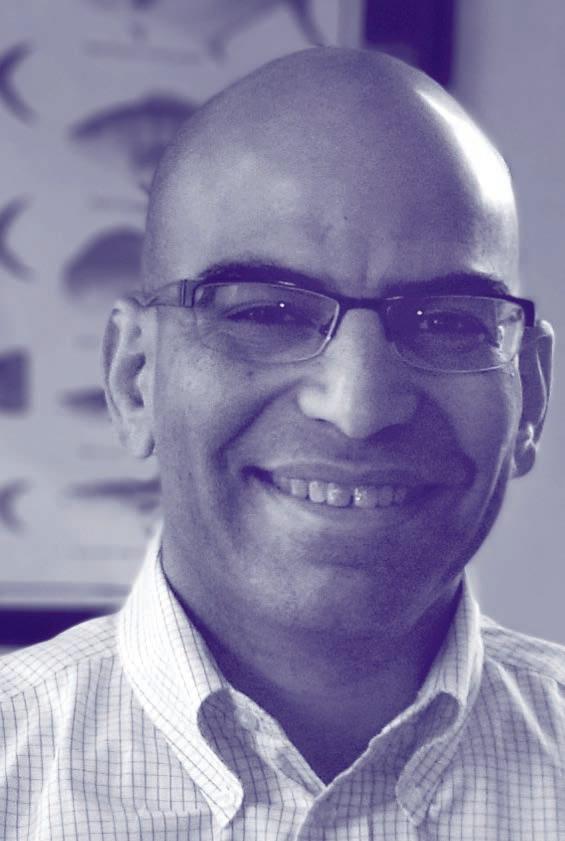
well as with the actions or reactions of others factored in. Balancing the two can lead to very effective collaborations between people with complementary incentives. Jeff is working on programming robots, drones, and machines
with these ideas in mind—he looks at how to incentivize these machines in such a way that they act as a collective effectively, while still using the one operator to multiple vehicles model. “But I’m getting more excited by taking the controls concepts and things we did at LIDS and applying them toward problems in Game Theory in societal settings,” says Jeff. “I’m finding that control engineering is relevant to problems in the mathematical social sciences and in game theory.”
To understand how much of a shift this is for Jeff, you have to understand that Jeff purposely didn’t go into the social sciences as an undergraduate because he felt like it wasn’t well grounded. “You didn’t have mathematical models that you can assess in repeatable controlled experiments as with physics. So there’s this grounding that you can build on. That’s what turned me off from social sciences, and now it’s completely flipped,” he says.
“Now what I find most exciting about the social sciences is that it’s not first principles based on physics. And yet you still want to design systems and/or policies that are effective. But you don’t have the luxury of these well-understood mathematical models. And that’s what makes dynamics and controls all the more relevant! So it’s completely flipped, what turned me off before is what makes it all the more exciting now,” he says. Interestingly, just as Jeff was starting to look into Game Theory, he read a pa -
per by leading researchers in the field that said: If players are not informed of the incentives of other players, then dynamic coordination to equilibrium is impossible. He used some controls ideas to show that they didn’t have the full story. A player or actor can react not just to another’s actions, but to that person’s recent trends, as well. For instance, if Player A knows that Player B has a trend of being altruistic by giving more money to someone who is in apparent need, then Player A can use that information to predict whether Player B will donate to charitable causes. Essentially, Jeff realized individual players didn’t necessarily have to know the incentives of other players, they could take actions in relation to them just by knowing trends in their behaviors, and react in a more sophisticated way than what the paper allowed.
“I remember where I was in the office when I had this idea and I programmed it and saw that it was working,” says Jeff. “Now this is some 20 years later than the pacing incident at LIDS; But I reacted the same way I did as a graduate student. I got very excited and became short of breath, I stood up and started pacing.” wWhen he realized what he had derived, he started going to Game Theory conferences —where he knew no one—and met Game Theorists. It pushed him out of his comfort zone, and it took a bit of persistence, but he was able to have the conversation he wanted, present his findings, and get recognized for it. “It was pretty gratifying,” he says.
Jeff’s greatest challenge these days seems to be an embarrassment of riches with multiple projects, as it becomes more and more difficult to find time to focus, read, and think. “I still don’t feel I’m progressing unless I feel like I’m personally involved…that’s a persistent tension.”
He may yet get a reprieve when at the end of July, Jeff, his two teenage sons, two younger daughters, and his wife pack up and head to the Middle East for an extended leave of absence. Jeff’s new faculty position will provide funding to develop and sustain robotics and controls research at King Abdullah University of Science and Technology (KAUST), a government research university an hour north of Jeddah, on the Red Sea in Saudi Arabia. Here he will continue using the fundamental ideas of information and decision sciences to shape new research trends in exciting, floor-pacing ways.
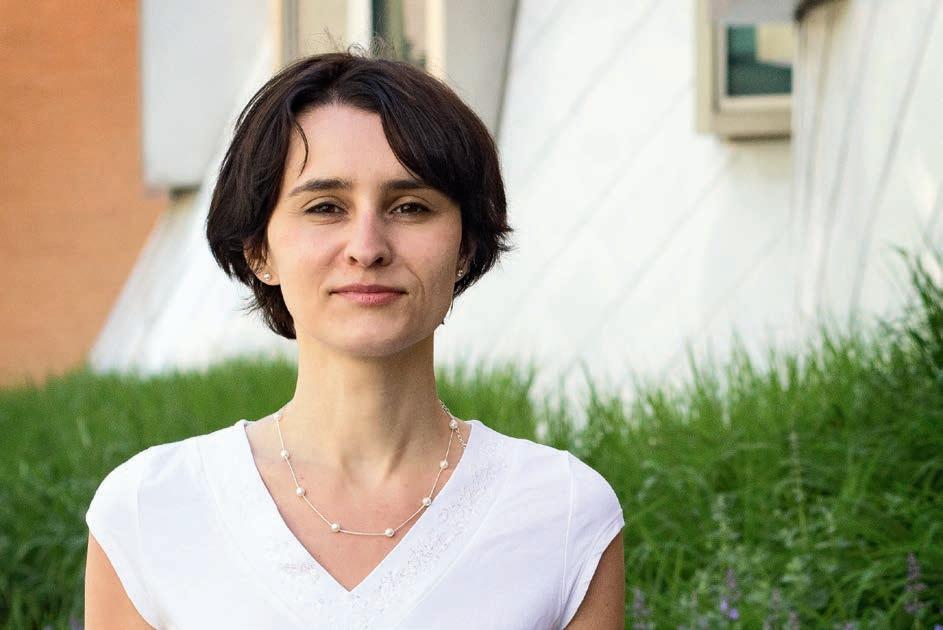
What do you do at LIDS?
I’m a financial assistant at LIDS. That consists of approving paperwork for the department on research and the discretionary funds, doing some projections, account reconciliations. Since my office is in HQ, I help with anything that’s needed.
What do you like about your work?
Not only am I learning new things but I’m also using some of the skills that I learned at Sloan. It’s a good balance and it made the transition from Sloan to LIDS easy.
How long have you worked at LIDS?
I started in February of 2014, so I’m still quite new. I used to work at MIT Sloan (for 6 years) as an administrative assistant while also having some financial responsibilities for the department. I realized that I’d like to do more financial work, and I found a position at LIDS.
When I first interviewed [at LIDS] I just had a good gut feeling about it. Then when I started working here it just continued, and I felt at home right away. I think it’s the people and the atmosphere that make the place nice.
What is it about the people at LIDS?
Okay, well how to define that... I just know that the people are easy to work with. They are always helpful.
What
do you do for
fun?
For the past few years I’ve been taking classes to get a second bachelor’s degree, and that took a lot of my private time. So a better question might be: “What do I wish I could do for fun?” Once a year I usually go somewhere like Yosemite or Yellowstone. I would like to travel more, to hike more, to read more books. I like watching movies and I love listening to (all kinds of) music!
What
was your first Bachelor’s degree in?
My first degree was in food chemistry. My high school was focused on chemistry, so at the time that was the next logical step, to enroll in a bachelor’s program in chemistry. My second job was working for a company that was selling, importing, and exporting food ingredients. But then I realized I liked the administrative part of it most. That’s kind of how I ended up looking into being an administrative person.
What’s next for you?
I just started working here! What’s next for me is to be proficient at my job. I would think that I still have some way to go. I’ve been thinking about taking some classes, maybe in research administration, just to know more about it and do my job well.
LIDS Awards & Honors
Congratulations to our members for the following achievements!
Awards
Prof. Dimitri Bertsekas has received the 2014 American Automatic Control Council Richard Bellman Heritage Award. This award is the most prestigious award recognizing the professional achievements for US control systems engineers and scientists.
Mujdat Cetin— former LIDS research scientist currently on sabbatical in LIDS and teaching in EECS—and his colleagues received the IET Radar, Sonar and Navigation Premium Award.
David Gamarnik was part of the analytics team “Kidney Exchange at the Alliance of Paired Donation”, which was an INFORMS 2014 Franz Edelman Prize finalist.
Prof. Asu Ozdaglar was awarded the Spira Teaching Award from MIT EECS.
Honors
Prof. Munther A. Dahleh was appointed to the William A. Coolidge Professorship.
Prof. Patrick Jaillet was inducted as an INFORMS Fellow in 2013 for “opening the field of a priori optimization for stochastic programming and for being regarded as the world leader in the field of probabilistic and online optimization.”
Prof. Sanjoy Mitter was elected a Fellow of the International Federation of Automatic Control (IFAC) in acknowledgement of his fundamental contributions to nonlinear filtering, stochastic control, optimization, optimal control, hybrid systems theory, and the unification of communication and control.
Prof. Pablo Parrilo was awarded the Farkas Prize of the INFORMS Optimization Society. This is the most prestigious award in optimization for a mid-career researcher. LIDS Director Alan Willsky won the 2013 SPS Society Award of the IEEE Signal Processing Society (SPS) for fundamental contributions to probabilistic modeling and for pioneering work in the development and application of multi-resolution statistical methods.
Prof. H. Vincent Poor, Dean of the Princeton School of Engineering and Applied Science and a member of the LIDS Advisory Committee, was elected as a Foreign Member of the Royal Society of the UK.
Eduardo Sontag was elected a Fellow of the International Federation of Automatic Control (IFAC).
Paper Awards
LIDS alum Ozan Candogan was selected as a finalist for the Nicholson student paper competition. Ozan was advised by Profs. Ozdaglar and Parrilo.
Prof. Jon How’s group, which includes LIDS student Kemal Ure and postdoc Girish Chowdhary, won the AIAA Best Paper award at the Guidance, Navigation, and Control Conference for the second consecutive year.
The Applied Probability Society of INFORMS presented its 2013 Best Publication Award to Prof. Devavrat Shah and his student Jinwoo Shin. The
Award recognizes an outstanding contribution to the field of Applied Probability during the years 2010-2013.
Thesis Awards
LIDS alum Venkat Chandrasekaran received the Young Researcher Prize in Continuous Optimization at the Fourth Mathematical Optimization Society International Conference on Continuous Optimization, ICCOPT 2013. Venkat was supervised by Prof. Pablo Parrilo.
LIDS alum Jagdish Ramakrishnan was selected as a finalist for the INFORMS
George B. Dantzig Dissertation Prize for his thesis. Jagdish was co-supervised by Drs. Bortfeld and Craft (from MGH) and Tsitsiklis (from LIDS).
LIDS Seminars 2013-2014
Weekly seminars are a highlight of the LIDS experience. Each talk, which features a visiting or internal invited speaker, provides the LIDS community an unparalleled opportunity to meet with and learn from scholars at the forefront of their fields.
The Stochastic Systems Group seminar schedule can be found at: http://ssg.mit.edu/cal/cal.shtml
Listed in order of appearance.
Jonathan Yedidia
Disney Research
Senior Research Scientist
Richard Peng
MIT
Department of Mathematics
Jonathan Kelner
MIT
Department of Mathematics; Computer Science and Artificial Intelligence Laboratory
Sujay Sanghavi
University of Texas
Austin Electrical and Computer Engineering Electrical and Computer Engineering; Wireless Networking and Communications Group
Yuval Peres
Microsoft Research Prinicipal Researcher, Theory Group
Mark Newman
University of Michigan
Department of Physics; Center for the Study of Complex Systems
Henrik Sandberg
KTH Royal Institute of Technology
Automatic Control Laboratory; School of Electrical Engineering
Giuseppe Caire
University of Southern California Department of Electrical Engineering
Eilyan Bitar
Cornell University
Electrical and Computer Engineering
Moe Win
MIT
Laboratory for Information and Decision Systems; Department of Aeronautics and Astronautics
Sertac Karaman
MIT Department of Aeronautics and Astronautics
Venkat Chandrasekaran
Caltech
Computing and Mathematical Sciences; Electrical Engineering
George Pappas
University of Pennsylvania
Department of Electrical and Systems Engineering
Andrew Barron
Yale University Department of Statistics
Cristopher Moore
Santa Fe Institute
Physics and Computation of Complex Systems
Wojciech Szpankowski
Purdue University
Computer Science; Electrical and Computer Engineering
Sean Meyn
University of Florida
Department of Electrical and Computer Engineering; Laboratory for Cognition & Control
Michael Neely
University of Southern California
Electrical Engineering Department, Communication Sciences Institute
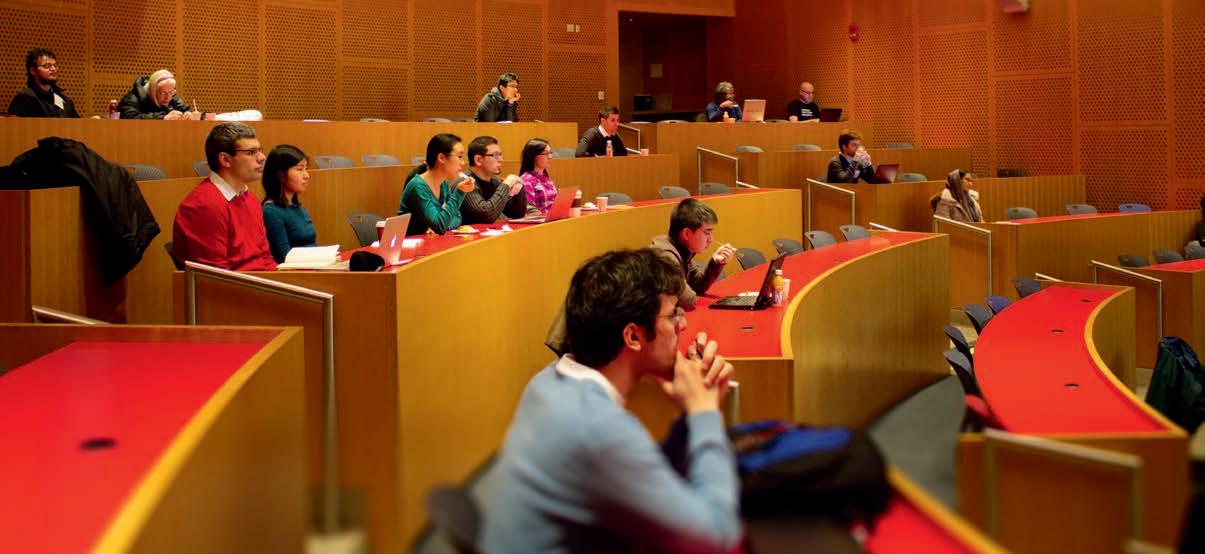
2014 LIDS Student Conference
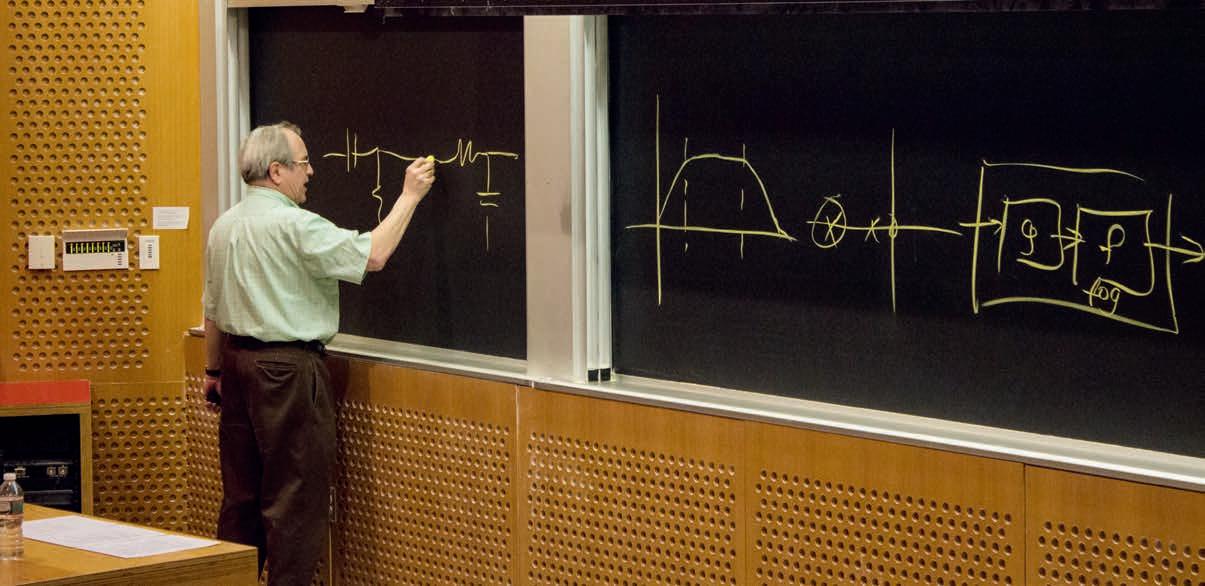
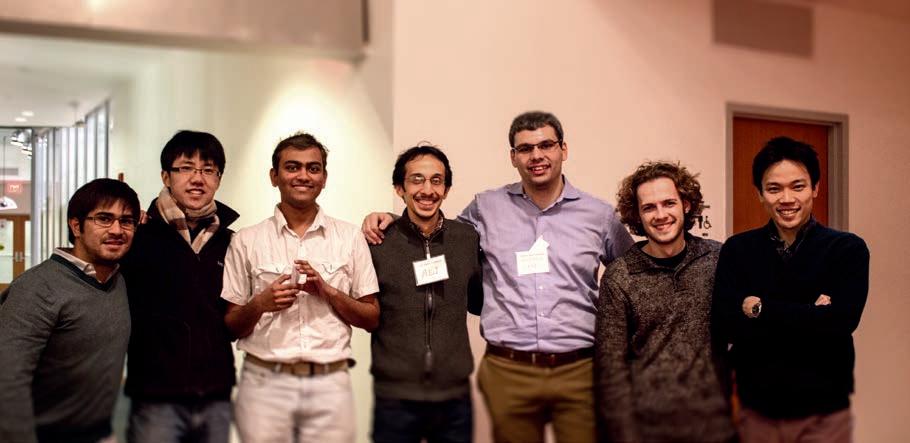
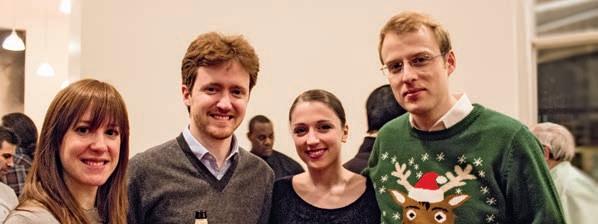
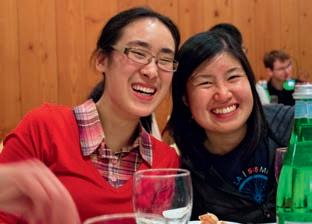
ORGANIZING COMMITTEE
Student Conference Chairs
Elie Adam
James Saunderson
Committee Members
Kimon Drakopoulos
Hamza Fawzi
Swati Gupta
Matt Johnston
Ali Kazerani
Christina Lee
Ying Liu
Marzieh Parandehgheibi
Dhruv Parthasarathy
Frank Permenter
Luis I. Reyes-Castro
Shreya Saxena
Omer Tanovic
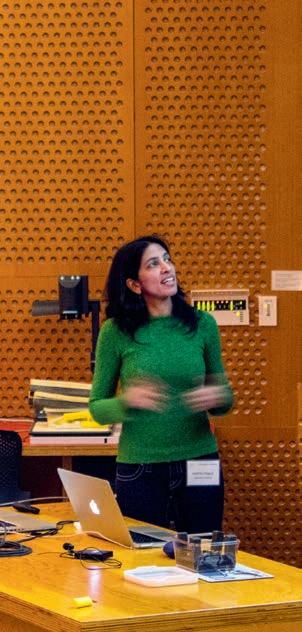
SPEAKERS
Ammar Ammar
Trevor Campbell
Austin Collins
Mark Cutler
Kimon Drakopoulos
Hamza Fawzi
Diego Feijer
Andras Gyorgy
Narmada Herath
Prof. Ali Jadbabaie
Matt Johnson
Matt Johnston
Dan Levine
Ying Liu
Andrew Mastin
Prof. Radhika Nagpal
Noele Norris
Frank Permenter
Hajir Roozbehani
Prof. Anant Sahai
Abhishek Sinha
Prof. Gerald Jay Sussman
Alex Teytelboym
Tianheng Wang
Kuang Xu
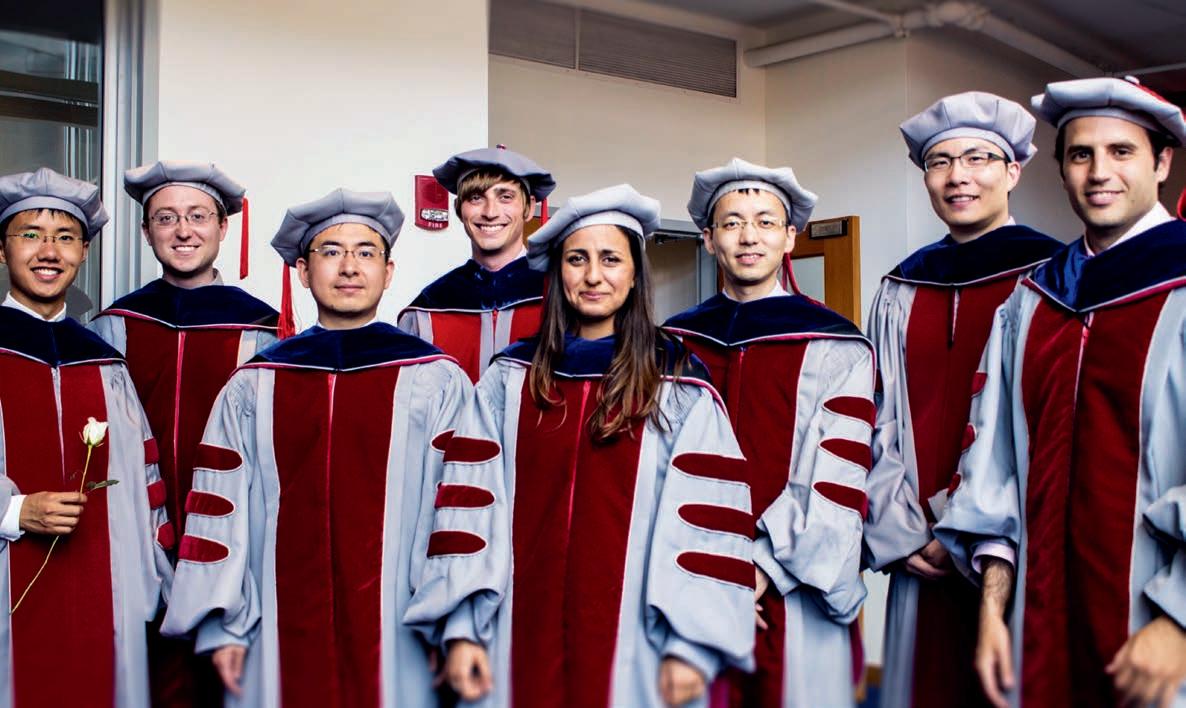
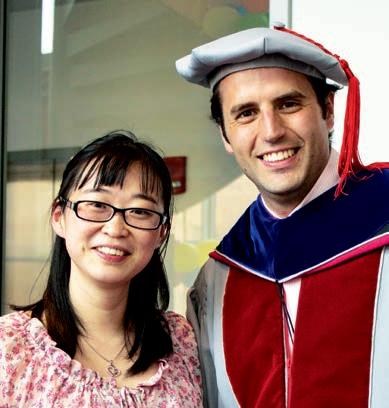

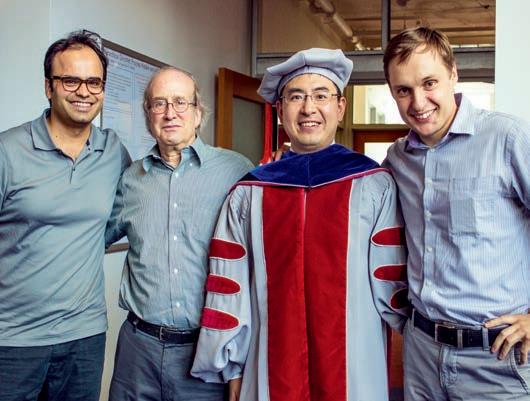

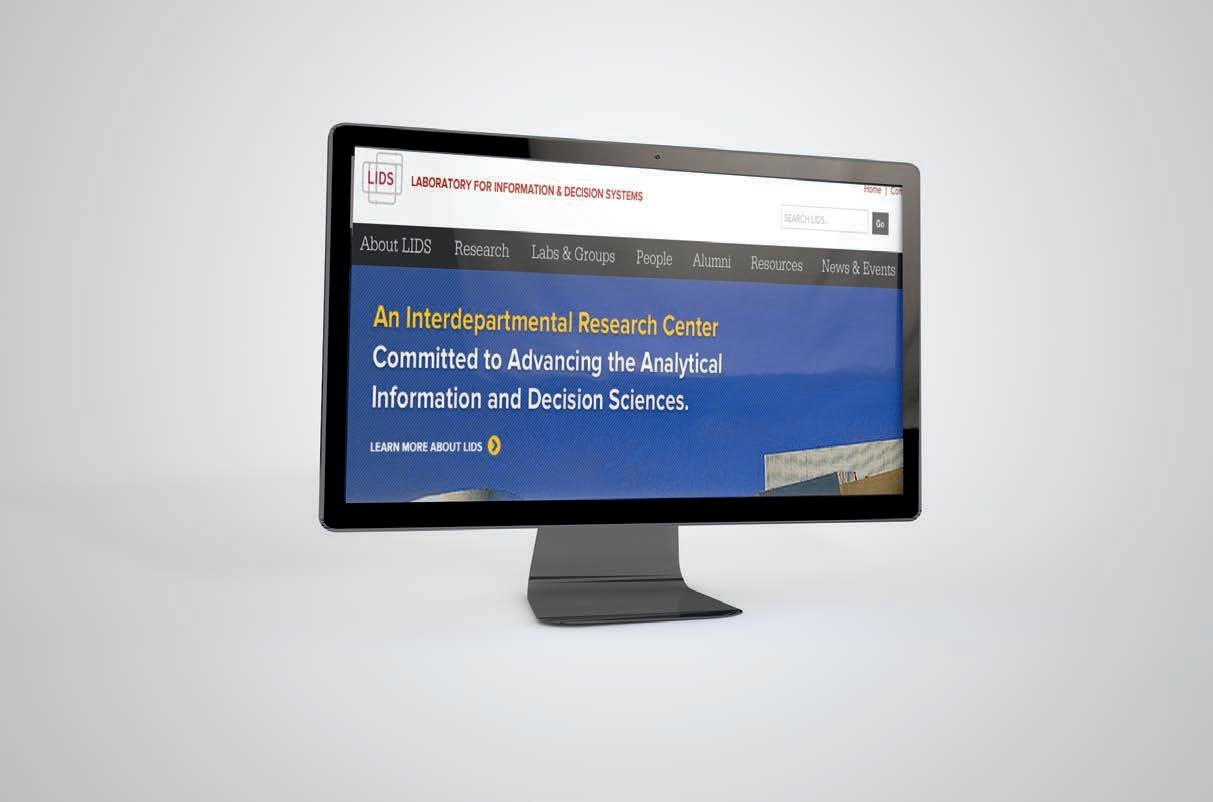
Our updated web site incorporates feedback from alums, faculty, and students—so that it can be an enhanced resource for keeping up with all the latest research, awards, and events happening here at the Lab. It’s designed for mobile, too, so you can check in anytime!
For other ways to connect with LIDS, visit our Facebook page: www.facebook.com/lidsmit And join our LinkedIn group—you can find us as the group called LIDS at MIT. This is a private group for members of the LIDS community (including Alums) to connect with each other. LIDS has a new look on the web!
